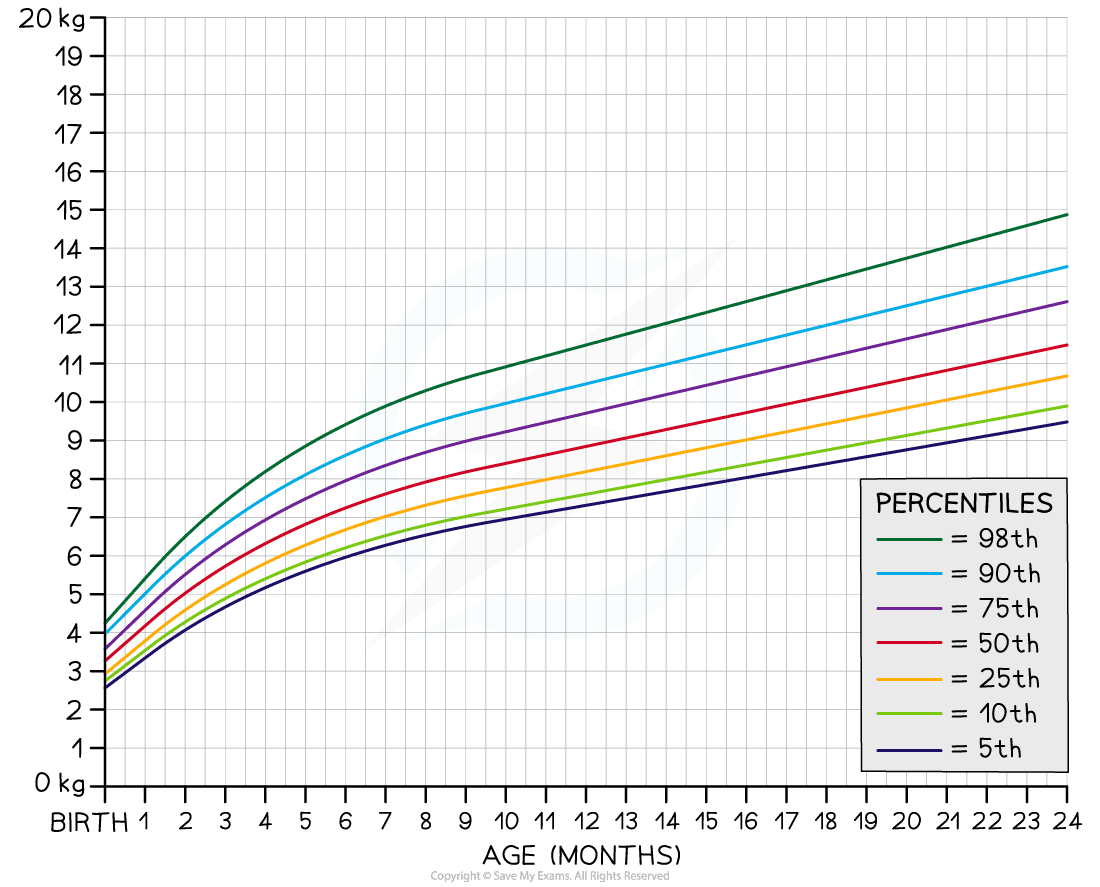Growth in Animals & Plants
- Growth is described as a permanent increase in size or mass
- The growth process is slightly different in plants compared to animals
- Both plants and animals grow via two key processes:
- Cell division – mitosis
- Cell differentiation – development of specialised features creating specialised cells
- Plants also grow through a unique process called cell elongation
- This is where hormones, such as auxin, cause cells to grow longer in response to certain stimuli e.g. sunlight
Monitoring Growth
- Growth charts can be used to monitor the growth of an organism by comparing its growth to the usual trends for that particular organism
- In humans, the growth of a baby is monitored using indicator measurements such as mass, length and head circumference
- These measurements are then compared with historical data collected from other children of the same age
- Any potential issues can then be highlighted and assessed if necessary. These issues might include:
- Malnutrition
- Obesity
- Inconsistencies across different measurements e.g. a large baby with a small head
- Sudden changes in trend (which may indicate expression of a new health problem)

The growth of an infant can be monitored using a growth chart that compares their mass, length or head circumference to historical data
Reading a Growth Chart
- To compare the growth of a child using a growth chart:
- Find the child’s age on the X-axis
- Find the child’s weight on the Y-axis
- Read across and up to the growth chart lines and find where they intersect (the correct percentile is the line closest to the intersection)
- For example:
- If a baby is on the 25th percentile for mass, it means that they are lighter than 75% of children their age and heavier than 25% of children their age
- Children can fluctuate around a growth trend, this is more obvious in younger children
- Girls follow a different growth chart to boys
- Specialised growth charts have been produced for children who suffer from specific health issues, such as Down syndrome

